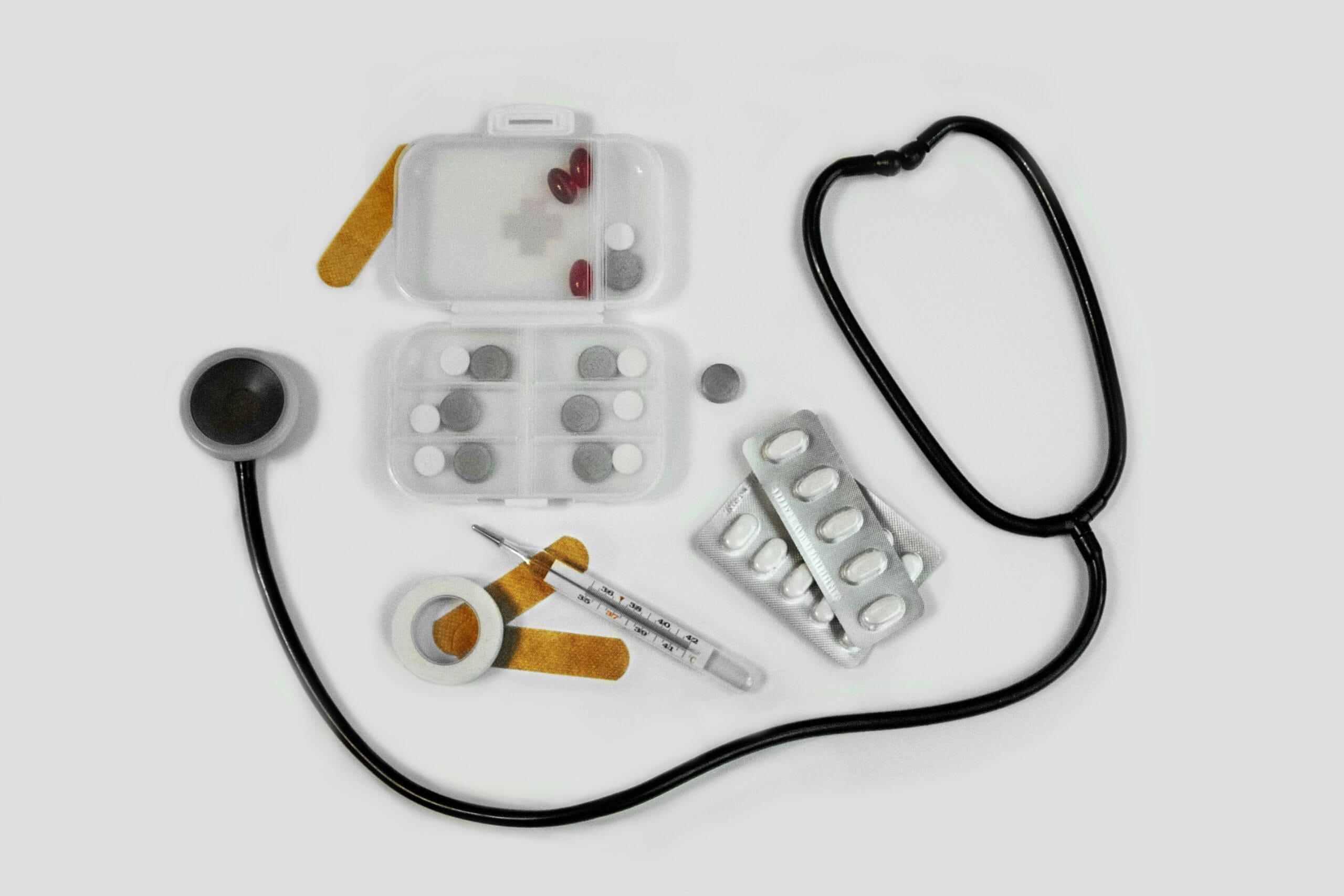Understanding the HIV Situation in Manipur: An Overview
Last Updated on November 24, 2024 by admin
Introduction to HIV and Its Global Impact
Human Immunodeficiency Virus (HIV) is a virus that attacks the immune system, specifically targeting the CD4 cells, which are crucial for maintaining the body’s defense against infections and diseases. If left untreated, HIV can lead to Acquired Immunodeficiency Syndrome (AIDS), a condition characterized by a severely weakened immune system that increases the risk of opportunistic infections and certain cancers. Since its discovery in the early 1980s, HIV has become a significant global health issue, highlighting the urgent need for effective public health strategies.
According to the World Health Organization (WHO), as of 2021, approximately 38 million people globally are living with HIV, with about 1.5 million new infections reported in that year alone. The response to HIV has evolved significantly, allowing individuals with access to antiretroviral therapy (ART) to live longer, healthier lives. However, despite advancements, the mortality rates linked to HIV/AIDS remain concerning, with around 680,000 deaths attributed to the disease in 2020. The pandemic has aggravated health disparities, particularly in low and middle-income countries, further complicating treatment accessibility and preventive care.
The impact of HIV transcends health, affecting families, communities, and economies at large. Stigmatization and discrimination against those living with HIV continue to hinder prevention and treatment efforts, leading to social inequities. Comprehensive strategies that encompass education, access to testing, treatment, and psychological support are essential in addressing the multifaceted challenges posed by HIV. Understanding the global prevalence and the ongoing battle against HIV/AIDS provides valuable insights for examining localized situations, such as that in Manipur, India, where unique socio-cultural factors and healthcare dynamics influence the epidemic’s trajectory.
HIV History in Manipur
The history of HIV in Manipur offers an important perspective on the evolution of the epidemic in the region. The emergence of HIV was first documented in the late 1980s, a period marked by the discovery of the virus in various parts of India. Manipur, along with other northeastern states, was identified as an area significantly affected by the HIV epidemic due to its geographical location and socio-economic factors.
In 1989, Manipur reported its first case of HIV, which marked the beginning of a public health challenge that would evolve over the coming decades. The early years of the epidemic were characterised by limited awareness and understanding of the virus, alongside significant stigma surrounding those infected. This lack of understanding made it difficult for public health officials to respond effectively, often leading to delayed interventions.
As the situation became increasingly dire, both governmental and non-governmental organizations mobilized resources to combat the epidemic. The 1990s saw a surge in response efforts, including the implementation of targeted awareness campaigns aimed at educating the population about the virus and modes of transmission. In particular, the Manipur State AIDS Control Society (MSACS) was established to facilitate coordinated efforts in addressing the challenges posed by HIV.
Throughout the years, significant milestones have marked the progress in tackling HIV in Manipur, such as the introduction of antiretroviral therapy (ART) and various outreach programs focused on vulnerable populations, including drug users and sex workers. These initiatives aimed not only to reduce transmission rates but also to dismantle the stigma associated with the virus. The ongoing efforts reflect a commitment to enhancing healthcare resources and promoting societal awareness, crucial components in managing the HIV epidemic in Manipur.
Current Status of HIV in Manipur
Manipur, a northeastern state in India, has been grappling with a significant HIV epidemic. According to the latest data from the National AIDS Control Organization (NACO), Manipur has one of the highest prevalence rates of HIV in the country, with an estimated prevalence of 1.08% among the general population. This figure is markedly higher than the national average, which stands at approximately 0.22%. The concentrated nature of the epidemic is particularly concerning among key populations, including men who have sex with men, female sex workers, and people who inject drugs, with prevalence rates soaring as high as 22% to 35% in these groups.
In terms of demographics, the majority of those affected by HIV in Manipur are young adults, particularly those aged 15 to 49. This demographic trend indicates a need for targeted interventions aimed at the youth population, which constitutes a significant portion of the infected individuals. Additionally, the gender disparity in HIV cases is notable, with a higher incidence observed in males compared to females, although women still represent a substantial number of the infected. The interconnectedness of socio-economic issues, such as poverty and lack of education, further exacerbates the situation and contributes to the risk of HIV transmission.
Recent trends indicate a slight decline in new infections, attributed to the implementation of various government and community-led initiatives aimed at prevention and awareness. However, stigma and discrimination against those living with the virus continue to pose significant barriers to effective treatment and care. Comparisons with neighboring states reveal that Manipur’s situation remains critical, highlighting the need for sustained efforts and resources to combat the epidemic effectively. Addressing these challenges through comprehensive prevention programs and access to healthcare is essential for mitigating the impact of HIV in this region.
Comparative Analysis: Manipur vs Other States in India
The HIV epidemic in Manipur presents a distinct scenario when compared to the broader landscape of India. As of the latest reports, Manipur has one of the highest prevalence rates of HIV in the country, rivaling states such as Mizoram and Nagaland. The adult prevalence rate in Manipur is estimated at around 1.44%, significantly higher than the national average of approximately 0.22%. This stark difference highlights the urgency of a tailored approach to public health strategies within the region.
In terms of public health strategies, Manipur has implemented various initiatives aimed at addressing the HIV epidemic. The state has focused on harm reduction programs, particularly for injecting drug users, through needle exchange programs and opioid substitution therapy. However, these initiatives face challenges such as social stigma and limited reach, which contribute to the ongoing transmission of the virus. In contrast, other states like Tamil Nadu and Maharashtra, although facing their own challenges, have established more robust health infrastructures and outreach programs, leading to better management of the epidemic.
Another critical aspect of the analysis involves Antiretroviral Therapy (ART) programs. Manipur’s ART coverage has shown improvements over the years, yet it still lags behind states such as Karnataka and Gujarat, which have witnessed considerable advancements in terms of patient adherence and retention in care. The unique socio-economic factors in Manipur, including geographic isolation and high levels of drug use, complicate the effectiveness of ART. Moreover, high rates of co-infection with tuberculosis further exacerbate the situation, making integrated care essential.
Ultimately, while Manipur’s efforts in tackling HIV are commendable, the unique challenges it faces necessitate continued focus and investment in tailored health strategies. It is critical for stakeholders to monitor and evaluate the effectiveness of existing measures, ensuring that ongoing challenges are adequately addressed in comparison to the successes achieved in other states across India.
Drivers of the HIV Epidemic in Manipur
The HIV epidemic in Manipur is influenced by a complex interplay of social, economic, and cultural factors. One of the primary drivers of this public health challenge is the prevalence of substance use, particularly intravenous drug use. This behavior increases the risk of sharing needles, thereby facilitating the transmission of the virus among users. The state’s history of drug abuse, compounded by limited access to harm reduction services, exacerbates the situation. Additionally, the stigma surrounding drug use often deters individuals from seeking necessary medical care or support, which can further fuel the spread of HIV.
Sexual behaviors also play a pivotal role in the transmission dynamics of HIV in Manipur. The region experiences high rates of inconsistent condom use among sexually active populations, particularly those involved in high-risk sexual practices. Factors such as lack of education about safe sex practices and insufficient access to sexual health services contribute to this troubling trend. Furthermore, varying social norms and cultural attitudes regarding sexual relationships can influence individuals’ decisions, which may inadvertently heighten vulnerability to HIV infection.
Population mobility is another significant driver in the HIV epidemic. Manipur’s strategic location along migration routes contributes to a transient population, where individuals often engage in high-risk behaviors away from their homes. This mobility complicates the monitoring and treatment efforts for HIV, as individuals may not consistently access healthcare services. Poverty remains a critical underlying factor, limiting access to education, health care, and harm reduction interventions. Lower socioeconomic status can hinder individuals’ ability to make informed health choices, thereby increasing their risk of contracting and transmitting HIV. Addressing these drivers requires a multifaceted approach that includes education, stigma reduction, and enhanced access to healthcare services.
Government and NGO Responses to HIV in Manipur
The HIV epidemic in Manipur has invoked significant responses from both government entities and non-governmental organizations (NGOs). Over the years, various initiatives have been established aimed at combating the crisis, focusing on preventive measures, education, and support for individuals living with HIV. The government of Manipur, in collaboration with the National AIDS Control Organization (NACO), has implemented a range of policies tailored to the unique social and cultural context of the region.
One notable initiative is the “Targeted Intervention” program, which primarily aims to reach high-risk communities, including sex workers, men who have sex with men, and intravenous drug users. This program facilitates awareness campaigns, condom distribution, and HIV testing services. Additionally, the integration of HIV prevention into general healthcare services ensures that people are informed about HIV transmission and available support programs.
On the other hand, various NGOs play a crucial role in supplementing governmental efforts. Organizations such as Manipur Network of Positive People (MNP+) and the Indian Red Cross Society contribute to awareness campaigns and psychosocial support for those affected by HIV. They mobilize communities to challenge stigma and discrimination, promoting the rights of individuals living with HIV. Furthermore, these NGOs often provide essential health services, including antiretroviral therapy (ART), significantly improving health outcomes for those living with the virus.
In addition to treatment and prevention programs, educational initiatives have been established, particularly within schools and community centers, to foster understanding of HIV/AIDS. These programs aim to equip young people with knowledge that can help reduce transmission rates while also challenging misconceptions related to HIV. Collectively, these efforts by the government and NGOs are vital components in addressing the HIV crisis in Manipur, contributing to a more informed and supportive environment for those affected.
Challenges in HIV Prevention and Treatment in Manipur
The fight against HIV in Manipur is beset by numerous challenges that hamper effective prevention and treatment efforts. One of the primary issues is the accessibility of healthcare services. Many individuals, particularly those in remote or rural areas, face difficulties in obtaining consistent and quality medical care. The limited number of healthcare facilities equipped to handle HIV treatment further compounds this problem, forcing patients to travel long distances for essential services. As a result, many individuals may forego necessary medical interventions, leading to further health complications.
Stigma and discrimination associated with HIV serve as another significant barrier to effective prevention and treatment in the region. Those living with HIV often face societal prejudice that discourages them from seeking testing and treatment. Such societal attitudes can exacerbate feelings of isolation and fear, causing individuals to hide their status rather than seek the support they need. The pervasive stigma surrounding HIV can also deter healthcare workers from fully engaging in HIV-related services, creating a disconnect between patients and the support systems designed to help them.
Moreover, a lack of resources further complicates the response to HIV in Manipur. Insufficient funding for HIV programs results in inadequate outreach and education efforts, which are vital for promoting awareness about the virus and available treatments. The need for comprehensive and ongoing training for healthcare professionals working with HIV populations is equally critical, as it ensures that accurate information and empathetic care are consistently provided. Additionally, ongoing conflicts and political instability in the region undermine healthcare delivery, making it harder to implement effective public health strategies. These interrelated challenges present significant obstacles in addressing the HIV situation in Manipur, highlighting the need for coordinated efforts to streamline access to healthcare, reduce stigma, and mobilize resources effectively.
Success Stories and Positive Outcomes
The HIV situation in Manipur has seen significant improvements over the years, thanks to concerted efforts by various stakeholders. Community-led initiatives have emerged as cornerstones of effective HIV prevention and treatment strategies. Community-based organizations have played a pivotal role in reaching out to marginalized populations, providing essential services that cater to their unique needs. These grassroots movements have fostered an environment that encourages open dialogue about HIV, reducing stigma and promoting testing as a crucial step towards treatment.
One notable success story is the implementation of peer education programs, which have been instrumental in disseminating knowledge about HIV prevention. Trained peer educators from within communities have effectively communicated messages about safe practices, thus empowering individuals to take charge of their health. This approach not only enhances understanding but also cultivates trust, allowing individuals to discuss their concerns openly. The results have been promising, with increased rates of testing and subsequently, higher numbers of people linking to care swiftly after diagnosis.
Additionally, the collaboration between local government and non-governmental organizations has led to the establishment of more robust healthcare infrastructure. Facilities specializing in HIV treatment have witnessed a rise in patient engagement, primarily due to community outreach efforts. Organizations like the Manipur Network of Positive People have been at the forefront, offering vital psychosocial support, health education, and advocacy for equitable access to treatment.
Moreover, awareness campaigns have been significantly tailored to resonate with local cultural contexts, thus garnering public interest and involvement. Success has been further propelled by the use of multimedia platforms to reach a broader audience. The result is a ripple effect, encouraging more individuals to seek information, undergo testing, and receive treatment. These success stories exemplify that with community involvement and tailored strategies, positive outcomes in combating HIV in Manipur are not only achievable but already underway.
Conclusion and Future Directions
In assessing the HIV situation in Manipur, it is evident that significant strides have been made in recent years, particularly in terms of awareness, prevention, and treatment efforts. Healthcare providers, government agencies, and various non-governmental organizations have collaborated to create a robust response to the epidemic, leading to increased access to antiretroviral therapy (ART) and improved health outcomes for people living with HIV. These developments are crucial, considering the unique sociocultural context of Manipur, which has posed distinct challenges in managing the virus’s spread.
Despite these advancements, the need for continued efforts remains paramount. Stigma and discrimination still affect individuals seeking help, often discouraging them from getting tested or starting treatment. To tackle these challenges, there must be a concerted push towards innovative approaches that foster trust and understanding among communities. Educational campaigns designed to demystify HIV and dispel myths surrounding the virus can play a vital role in combating stigma, thus enhancing testing and treatment rates.
Moreover, addressing the factors that contribute to the vulnerability of certain populations, especially in marginalized communities, is essential. Tailored interventions that respond to the specific needs of those most at risk can significantly impact the overall HIV response in Manipur. As the landscape of healthcare continues to evolve, integrating technology in service delivery, such as telemedicine and mobile health applications, could provide additional avenues for support and treatment accessibility.
In conclusion, while progress has been made in the fight against HIV in Manipur, ongoing commitment to awareness, innovative solutions, and targeted interventions is crucial for achieving long-term improvement in the situation. Collaborating across sectors and engaging local communities will enhance the effectiveness of these efforts, ensuring that those living with HIV receive the comprehensive care they need.










